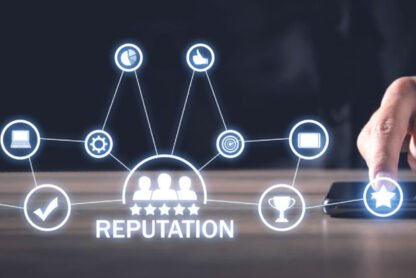Picture a manufacturing plant where AI prevents material waste before it happens or a building that generates more energy than it uses. These aren’t future fantasies — they’re real applications of technology tackling environmental challenges today. As artificial intelligence refines resource management and innovative materials replace wasteful products, organizations and individuals are turning environmental goals into tangible results.
Technological innovation drives environmental protection forward in numerous ways – smart monitoring systems slash energy use while biodegradable materials reduce waste in our landfills. Teams using agile tools can also spot inefficiencies early, preventing waste before it begins. These advances work together, each reinforcing the others to create meaningful environmental impact.
Rethinking Workflows: Agile Methodologies for a Sustainable Future
Agile practices create naturally sustainable operations while creating sustainable growth for companies. Small, focused teams complete work efficiently, eliminating the waste that comes from juggling too many projects at once. These streamlined workflows cut resource consumption at its source, replacing wasteful multitasking with purposeful progress.
Process optimization tools like project management boards and assignment trackers can drive a more sustainable approach. Teams that master their workflow find new ways to reduce waste, from limiting works in progress (WIP) to digitizing traditionally paper-heavy processes. By combining smart process controls with modern collaboration tools, organizations build environmental responsibility directly into their daily operations.
Reducing Environmental Impact Through Process Optimization
Companies can increase their operational efficiency and reduce waste by setting clear WIP limits. WIP limits support agile development by identifying ongoing bottlenecks and revealing wastefulness. WIP limits also improve accountability, meaning teams achieve an ideal work pace that balances efficiency against overload. This approach also minimizes hidden waste due to storage and inactivity.
Digital Transformation for Environmental Benefits
Adopting agile tools can help firms digitize their processes, too. Digital kanban boards replace paper systems, video calls substitute for travel, and cloud storage eliminates the need for printed documentation. Remote collaboration tools allow teams to work effectively from anywhere, cutting commute-related emissions while maintaining productivity. This can significantly reduce waste, increase efficiency, and help firms adopt more sustainable practices.
Advanced Materials: Driving Innovation in Sustainability
Once confined to research labs, innovative advanced materials now drive environmental solutions in the real world. Biomanufactured metals and advanced polymers are biodegradable, while 3D-printed materials minimize upfront waste. Many materials are now manufactured with AI tools that increase yield and improve energy efficiency.
Inside modern buildings and across factory floors, these sustainable materials show their practical power. Smart fabrics harvest energy from everyday surfaces, while next-generation polymers break down harmlessly after use. Quietly but steadily, each breakthrough raises the bar for what materials can achieve in both environmental protection and practical performance.
Next-Generation Sustainable Materials
Building on decades of research, scientists have developed materials that adapt to the environment. Solar-capturing fabrics turn ordinary surfaces into power generators, while new composites made from industrial waste are indistinguishable from traditional options in terms of performance. These materials match or exceed conventional materials in durability and function while empowering consumers to lead more sustainable lifestyles.
Biodegradable Polymers
During their useful life, biodegradable polymers maintain their strength and utility, only breaking down when exposed to specific environmental conditions. This feat of engineering means that consumers can throw away coffee cups and single-use cutlery without fearing that their waste will end up in a landfill. Through careful engineering, manufacturers can also produce packaging that protects products effectively while decomposing harmlessly after delivery, leaving no lasting environmental impact.
Integrating Tech into Daily Life: Smart and Sustainable Living
Quietly working in the background, consumer technology makes sustainable choices simpler every day. While programmable thermostats already cut energy bills, newer smart models learn from daily routines to optimize savings automatically. Simple upgrades to energy-efficient appliances paired with smart monitoring help consumers track their environmental impact and find new ways to conserve energy.
Monthly power bills tell only part of the story as connected devices reveal detailed patterns of resource use. As more households adopt smart technology, automated systems help maintain good habits like adjusting temperature settings and turning off unused devices. Real-time feedback shows exactly how small changes add up to a more meaningful environmental impact.
Smart Monitoring for Sustainability
Modern buildings use integrated smart systems to pinpoint energy waste at its source. When rooms sit empty, smart sensors adjust both lighting and ventilation to match actual occupancy. Before monthly bills reveal problems, connected meters detect costly water leaks within minutes. If temperature zones drift outside optimal ranges, micro-adjustments to HVAC systems maintain comfort while minimizing energy draw. Homeowners can track their efficiency using mobile apps and identify areas for improvement.
Final Thoughts
Agile tools cut waste at the source while advanced technology improves resource conservation. The widespread adoption of automation has also reduced waste by identifying bottlenecks and increasing productivity. These tools make sustainable practices, like using eco-friendly packaging, the norm for modern businesses that want to appeal to climate-conscious consumers.









